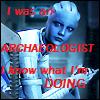
Books 2011: 41-45
It strikes me that I may have counted Bear's The White City twice in previous bookposts. Well, no harm. I certainly read it more than once.
41. Greg Van Eekhout, Norse Code.
A fast-paced, engaging Norse apocalypse romp starring Mist, a modern Valkyrie, and Hermod, apparently the Norse god of poking-his-nose-into-awkward-corners-and-getting-bit. Decidedly entertaining, if light.
42. Melissa Marr, Wicked Lovely.
YA. With faeries. Rather less twee than I expected, and entertaining while it lasted, but I'm not left feeling terribly pushed about reading the sequel.
43. Robert Jordan and Brandon Sanderson, Towers of Midnight.
I forgot to put this in the last bookpost. It's massive, and it continues the trend of wrapping things up and getting them pointed at The Last Battle. At this point I'm more than a little worn out by the whole thing. Book Fourteen of the WOT had damn well better has some freaking excellent payoff, because despite some moments of win- actually, Mat in the Tower of Ghenjei and Egwene's battle in Tel'aran'rhiod are pretty much the only two that stand out: Morgase could have had a moment of win, but it felt like a flop - mostly what I remember of this book is that it is massive.
non-fiction
44. Christopher I. Beckwith, Empires of the Silk Road: A History of Central Eurasia from the Bronze Age to the Present. Princeton University Press, Princeton NJ, 2009.
In any sweeping history that aims to cover three thousand years, the author must choose his central thesis carefully. In general, Beckwith does this admirably, choosing to focus first on the characteristics of what he refers to as the "Central Eurasian Culture Complex," and as the historical sources permit more detailed statements to be made, on the fundamental economic interconnectedness of the region between the Black Sea and the Eastern Steppe and the vital role of nomad kingdoms and hegemonies in creating and driving prosperity.
Beckwith takes a roughly chronological approach in his history, proceeding from the Scythians first mentioned in Herodotos down to the collapse of the Soviet Union. His writing is lucid, generally clear, and frequently entertaining. However, his sweeping statements sometimes did strike me as a little too sweeping, and in chapter 12, "Central Eurasia Reborn," he permits himself to digress into a lengthy rebuttal of theoretical and aesthetic Modernism, which does the book little good. Critique of poetry and art on aesthetic grounds does not belong in what is primarily a work of history, however interesting and thought-provoking Beckwith's position is. It is, dare I say it, aesthetically displeasing.
(I take no issue with his critique of Postmodernism. Postmodernist theory is interested only in tearing down, not in creating, which makes it very frustrating.)
That one chapter out of thirteen (and two very lengthy appendices on Proto-Indo-European diaspora and Ancient Central European Ethnonyms) is entirely auctorial soapbox detracts little from the rest of the book, though. It is a fascinating, highly readable book about a region and a set of cultures much neglected by modern English-language (European in general, I think) historiography.
45. Judith Flanders, The Invention of Murder: How the Victorians Revelled in Death and Detection and Created Modern Crime. Harper Press, London, 2011.
I thought, when I picked this book up, that the subtitle would prove to be an exaggeration. Revelled? Really?
Surprisingly, it's not. Flanders draws upon newspaper reports as well as broadsides, fiction, playbills and penny-bloods, to create a picture of how English (British, but mostly English) society of the 19th century viewed murder: the crime itself, the victims, and the (putative) perpetrators. And since newspapers, broadsides, and penny-bloods did, indeed, revel in murder, it seems their readers would share their outlook.
It's a fascinating book, bringing to light just how little evidence (in some cases, none at all, or evidence that pointed in the opposite direction) was required to get a person convicted of murder. Rumour, innuendo, or local grudges were frequently all it took to achieve a conviction - and in many cases a hanging. The chapter on secret poisonings (few to none, despite the widespread conviction that they were EPIDEMIC!!111! even - especially - among medical professionals) and burial-society insurance murder (also few to none, also widespread conviction that vasty numbers of the poor were killing their children to collect on the coffin money) is particularly illuminating.
I recommend it extremely.
Eventually, I'll have something more to say about Dragon Age 2, apart from my previous I-am-being-set-up-for-a-sequel-do-not-want rant. The more I consider it, the more I'm coming to appreciate what Bioware is striving at. Like it or not, DA2's a fine example of the videogame RPG approaching mature artform status. It has a thematic argument.
But that's a post to be made when I'm properly awake.